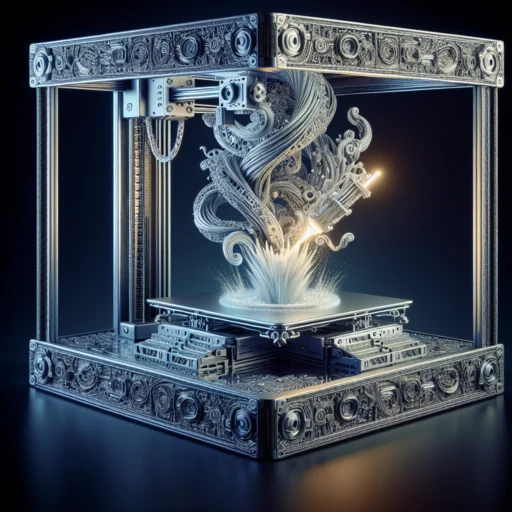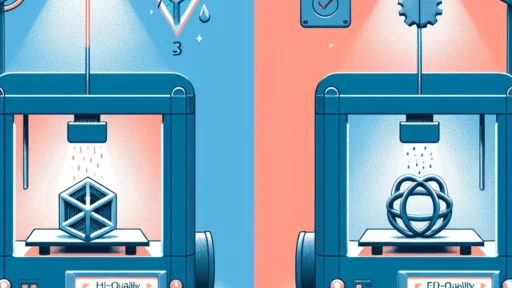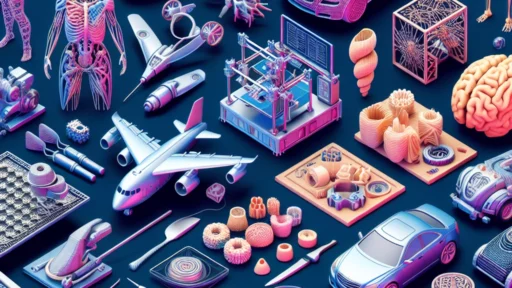The Intersection of Art and Technology in 3D Printing
In recent years, 3D printing has transformed from a niche engineering tool to a game-changing medium for artists and creators. It’s as if technology and art have shaken hands, sparking a creative revolution that invites us all to reimagine our relationship with the objects around us. The combination of art and technology isn’t entirely new—think of photography or digital art—but the implications of 3D printing are profound and widespread. Let’s dive into how this fascinating overlap is changing the creative landscape.
A New Canvas for Artists
When artists think of materials, they typically envision paint, clay, or stone. Now imagine being able to create intricate sculptures from digital designs using a 3D printer. Instead of hand-carving details over weeks or even months, artists can materialize their visions in a fraction of the time, all with the click of a button. Whether it’s a tiny figurine or a large-scale installation, the potential to prototype and produce is practically limitless.
Some artists are exploring the technology to create entirely new forms of art. Take, for instance, the organic shapes and designs that are possible only through 3D printing. Using parametric design software, artists can generate forms based on algorithms, resulting in pieces that have qualities and complexities that are difficult, if not impossible, to achieve by traditional means. For many creatives, this represents not just a change in technique but a fundamental shift in how they express their visions.
Accessibility and Customization
One of the most exciting aspects of 3D printing is its accessibility. While traditional casting or sculpting materials can be exorbitant, 3D printers have become more affordable and user-friendly. This democratization of art means that more people than ever can dabble with digital sculpting and 3D printing. Imagine a budding artist working out of their garage, designing an intricate jewelry line or playful home decor. The barriers to entry are lower, and that opens the floodgates for creativity across diverse communities.
Customization is another brilliant feature of 3D printing. Artists can create one-of-a-kind pieces tailored for individuals or specific settings. It’s easy to visualize custom-designed furniture made to fit unique spaces or personalized gifts that celebrate the recipient’s interests. This level of customization allows art to be a deeply personal experience, both for the artist and the consumer.
Collaborations and Community
As the technology has evolved, so too has the ecosystem surrounding it. Many artists leverage social media and online platforms to share their work, gather inspiration, and collaborate with fellow creatives. Digital platforms like Thingiverse and MyMiniFactory provide repositories of 3D designs, allowing users to share and remix their creations. This sense of community fosters innovation and encourages artists to push boundaries, making it easier to learn and grow together.
Moreover, collaborations between artists, engineers, and designers have resulted in groundbreaking projects. For instance, some installations make use of augmented reality, allowing viewers to interact with 3D art in a more immersive way. As these collaborations flourish, we’re likely to see even more boundary-pushing works that fuse art with technology in unexpected ways.
Challenges on the Horizon
While the future is promising, it’s essential to acknowledge some of the challenges that come with integrating art and technology. Issues like intellectual property rights can become murky when designs are shared and modified so easily online. Artists have every right to protect their creations, but navigating the legal landscape can be tricky.
Additionally, as art becomes increasingly tied to technology, there’s a risk that some traditional forms of craftsmanship may be overshadowed. Not all art can be replicated by a machine, and the human element in creativity remains irreplaceable. It’s essential for artists to find a balance between embracing new technologies and honoring the time-honored techniques that have shaped our artistic heritage.
Where Are We Heading?
As we stand at this exciting juncture where art and technology intersect, the possibilities are vast and exhilarating. 3D printing opens doors for innovation, customization, and community that traditional art forms simply can’t match. Yet, as we advance, it’s crucial that we respect and preserve the rich legacy of artistry that has come before us. The most revolutionary artistic movements often honor the past while boldly inventing the future.
So, whether you’re an artist looking to explore new mediums or just a curious onlooker, the world of 3D printing is a fascinating space filled with endless opportunities for exploration and creation. Who knows? The next masterpiece could be waiting for you in a digital file, just waiting to be brought to life.





